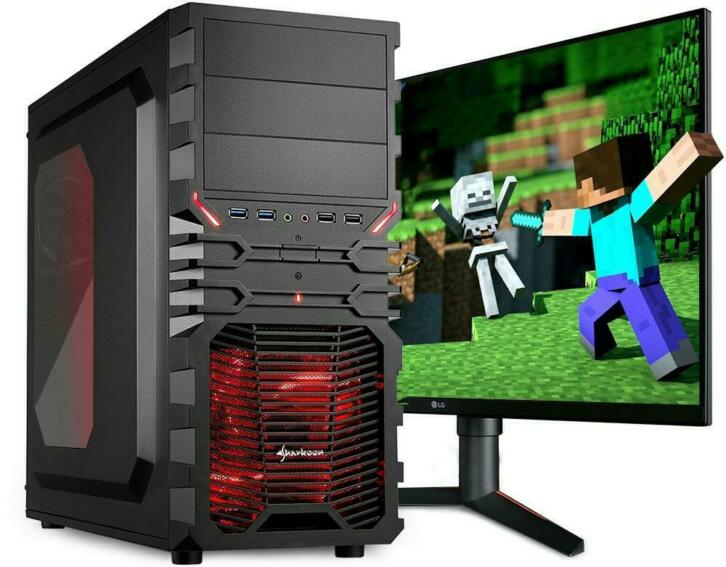Cheap Gaming PC
We'll tell you what to look for when choosing the cheapest gaming PC.
- The most important component in a gaming computer is, of course, the graphics card. It is responsible for creating a three-dimensional scene, applying textures, effects, as well as displaying the finished two-dimensional image on the screen.
- The processor coordinates the work of all components, its performance accelerates the work of the computer as a whole. However, games and programs have their limit, so it makes no sense to take the most powerful models only for games.
- RAM has little to do with anything, the main thing is that there is enough of it.
- HDD, also known as hard disk, affects the download speed of programs and games.
Grafic card
FPS is the number of screen updates per second.
As in cartoons, the image on the monitor consists of frames that change quickly between them. Two things affect this: graphics settings and resolution.
The entry-level v gaming computer is built for a standard FullHD (1920×1080) resolution monitor that is limited by the number of frames per second. The standard parameter is 60. In the technical specifications, this value is given in hertz - "Hz".
This means that if you have a standard 60 Hz monitor with a resolution of 1920 x 1080 pixels, then this is the maximum you need and will achieve from games. So even if you buy a very powerful gaming system and want to turn on a higher resolution, FPS above 60 will be practically unnoticeable.
A gaming PC should provide a comfortable FPS and image quality. Older and weaker cards force you to compromise. Only the top cards of the budget segment can handle the maximum settings in this resolution.
Online games like Dota 2, WoT, CS: GO, War Thunder and others will be played comfortably even on weaker hardware. Although WoT has increased the hardware requirements and more powerful hardware is needed, in principle, if you choose a computer for online gaming, then even weaker models will do.
If you plan to play new games at maximum speed. Your choice in this case is at least GTX 1060 or RTX 2060. The latter option is newer but more expensive. However, it is more advantageous because it handles all new products for the time being and even has a small reserve for a few years in advance. You can already play Cyberpunk 2077, Anno 1800, Total War: Three Kingdoms, Mortal Kombat 11, Skull & Bones, Wolfenstein: Youngblood with it. Whether the GTX 1060 can handle them is a question.
Average FPS
If the card gets 40 or less FPS, you should definitely not get it. Or be prepared to compromise the settings.
Online game features
When fighting with real people over the Internet, you need to react as quickly as possible, otherwise your opponents can gain an advantage. If in an offline game it is basically comfortable to play with FPS 45-50, then for battles with real people you need all 60 or even more. You won't see more than 60, but you will feel the difference in response sensitivity.
The lowest FPS for the game is 30 frames per second. You can do it in turn-based strategies or simple RPG games. For active games in the genre of shooter, real-time strategy, simulator, etc., a good stable FPS is required.
| Frames per second | 750 GTX Ti | GTX 970 | GTX 1050 | 1050 GTX Ti | GTX 1060 | RTX 2060 |
|---|---|---|---|---|---|---|
| World of Tanks | 35 | 85 | 50 | 52 | 94 | 155 |
| The Witcher 3: Wild Hunt | 15 | 46 | 26 | 28 | 51 | 84 |
| PUBG | 20 | 47 | 30 | 32 | 59 | 158 |
| GTA 5 | 36 | 87 | 43 | 51 | 55 | 148 |
| Subnautica | 33 | 72 | 51 | 54 | 81 | 120 |
| Far Cry New Dawn | 25 | 59 | 40 | 44 | 69 | 106 |
| Battlefield 5 (DXR off) | 18 | 44 | 29 | 33 | 60 | 129 |
| Anthem | 18 | 44 | 23 | 27 | 50 | 88 |
| Shadow of the Tomb Raider | 19 | 45 | 25 | 29 | 52 | 121 |
processor
All graphics card tests were performed in tandem with a powerful processor, much more powerful than the required level. This is necessary so that the test results reflect the real performance of the cards and the FPS does not depend on other components. Therefore, the assembly of the system unit always begins with the processor.
To assemble a system unit for games, you need to understand a little about the technical characteristics. In addition to dozens of lines of less important parameters, processors also have several more important ones that you need to know:
- Number of cores – displays the number of physical computing cores.
- Number of threads - some processor models allow you to create additional computing cores, but not physical, but virtual. This means that they do not have their own frequency, but only divide the two available. In games this feature is practically useless if you have 4 physical cores.
- The clock frequency is the main parameter of the processor. Roughly speaking, the frequency of the processor determines its performance, so the more, the better. However, there is no strict relationship between frequency and computing power. For example, processor A with 2,0 GHz and 4 cores is not always more powerful than processor B with 3,0 GHz and 2 cores. There are synthetic tests - Benchmarks - to compare performance.
- Overclockable - Overclockable models are usually marked with a K in the model number. This feature unlocks the gain and voltage features in the processor. At the same time, it starts to generate more heat, but the computing power increases.
- Amount of cache memory - this memory is sort of like the processor's personal very fast RAM memory. At the moment, the most advanced is L3. Models with L2 memory are not relevant today. Basically, the more the better.
- Process Technology – The physical size of the chips used in the CPU package. Less is better.
- Heat loss – the amount of heat generated by the processor. Manufacturers often underestimate this point. In order to protect the element from burning out, it is better to use a cooling system one and a half times stronger than indicated in the manual.
Cores or frequencies?
For games - definitely frequency. Many games still don't know how to work with multiple cores at the same time. This is especially true for old games - World of Tanks has always been a champion in this area, but they have already added multithreading to their project. For a game that doesn't know how to use multiple cores at the same time, their number is irrelevant, frequency is more important.
When building, it is better to look not only at the parameters, but also at the tests.
How many cores do you need?
A gaming processor should have four to eight cores. As paradoxical as it may sound, too many cores slow down gaming performance. And as the tests show, even the most demanding games do not take more than eight cores. And then in this case 90% of the load goes to 4 of them and the rest are practically not busy. However, if we are talking about a cheap PC, too many cores is not a threat to you.
So the processor of the gaming computer must have at least 4 cores with a frequency of 3,0 GHz. A processor with less power is no longer worth putting in the system.
Intel or AMD?
Despite AMD's success, their processors lag behind Intel when it comes to stability.
RAM
A gaming computer, even a cheap one, should have everything new, so that in a year, when the old hardware stops handling just released games, you do not run to the store for a new one. This means only DDR4 is needed.
The minimum memory size is 8 GB. The maximum is specified in the processor specifications.
What is frequency and why is it needed?
The higher the frequency of the memory, the faster its work. The specifications should also indicate the maximum bandwidth. These two factors are related. The higher the frequency, the faster the bar works.
The maximum allowed frequency is limited by the processor and motherboard. For DDR4, the standard frequency is 2400 MHz.
What are timing and voltage?
Features of random access computer memory technology - latency - the delay time of the operation of individual blocks under various conditions. In general, the lower the timing, the better. But these values are not critical.
The voltage in the memory is most often standardized and does not affect anything except its temperature. RAM is usually a very reliable component that practically does not heat up or deteriorate. So this factory setting is irrelevant for the average user.
You can forget about these parameters when building the computer.
What is the best way to allocate memory cards?
Your motherboard can have anywhere from 2 to 8 RAM slots. This is usually a two-channel or four-channel operating mode. Maximum speed can be achieved if as many slots as possible are used. This means that if you put a 4×4 instead of a 2×8, the speed will be higher.
Do you need RAM cooling?
No, it is not necessary. This is only a decorative element, the memory does not heat up so much that it needs additional heat dissipation.
Storage – SSD and HDD
Even the simplest computers of 2019 should work with two drives - SSD and HDD. A small and fast SSD disk ensures fast loading of programs, games and the system as a whole. A spacious hard drive will be able to store gigabytes of information reliably and for a long time.
SSD speed is very important, usually for SATA models it is limited to 550 MB / s, there is also the m.2 format, these models are installed directly into the motherboard and have a very high speed of up to 3,5 GB / s.
Products
-
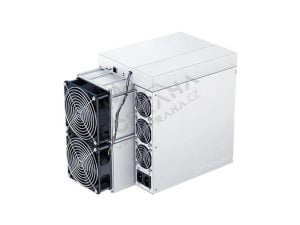 Antminer Bitmain KA3 173Th/s – 3154w Kadena KDA
Reviews 0 z 5
Antminer Bitmain KA3 173Th/s – 3154w Kadena KDA
Reviews 0 z 5371, 599.00 CZKOrigfinal price was: 371 CZK.115, 207.00 CZKCurrent price is: 115 CZK. | 95, 212.40 CZK without WAT -
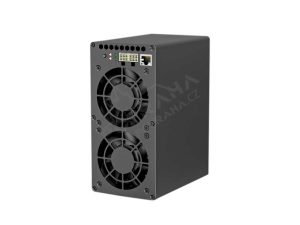 Goldshell AL-BOX 360 Gh/s 180w Blake3 ALPH
Reviews 0 z 5
Goldshell AL-BOX 360 Gh/s 180w Blake3 ALPH
Reviews 0 z 5484, 999.00 CZKOrigfinal price was: 484 CZK.433, 282.00 CZKCurrent price is: 433 CZK. | 358, 084.30 CZK without WAT -
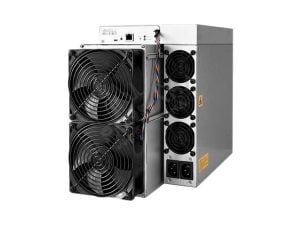 Bitcoin Asic Antminer S21 200T 3500W - SHA-256 - hosting
Reviews 0 z 5Od 117, 737.00 CZK
Bitcoin Asic Antminer S21 200T 3500W - SHA-256 - hosting
Reviews 0 z 5Od 117, 737.00 CZK -
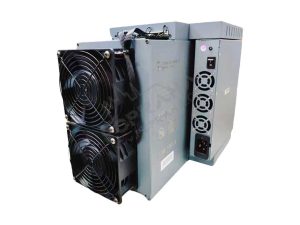 EZ100 Bombax 12500Mh/s - 2300W ETC/ ZIL
Reviews 0 z 5728, 995.00 CZK | 602, 475.21 CZK without WAT
EZ100 Bombax 12500Mh/s - 2300W ETC/ ZIL
Reviews 0 z 5728, 995.00 CZK | 602, 475.21 CZK without WAT -
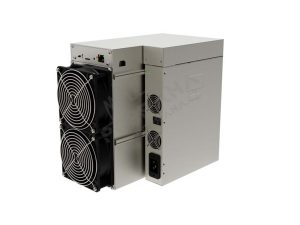 IceRiver KAS KS5L – 12TH – 3400w - KASMINER
Reviews 0 z 5Od 311, 929.00 CZK
IceRiver KAS KS5L – 12TH – 3400w - KASMINER
Reviews 0 z 5Od 311, 929.00 CZK

